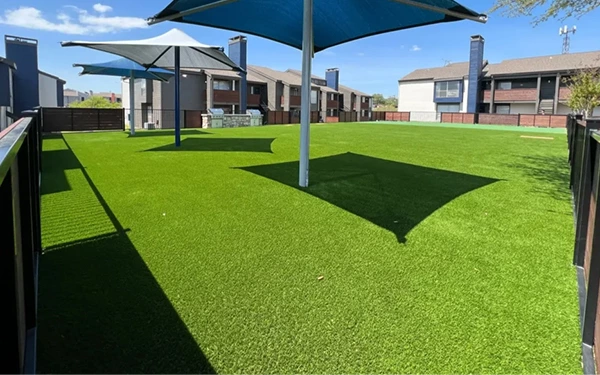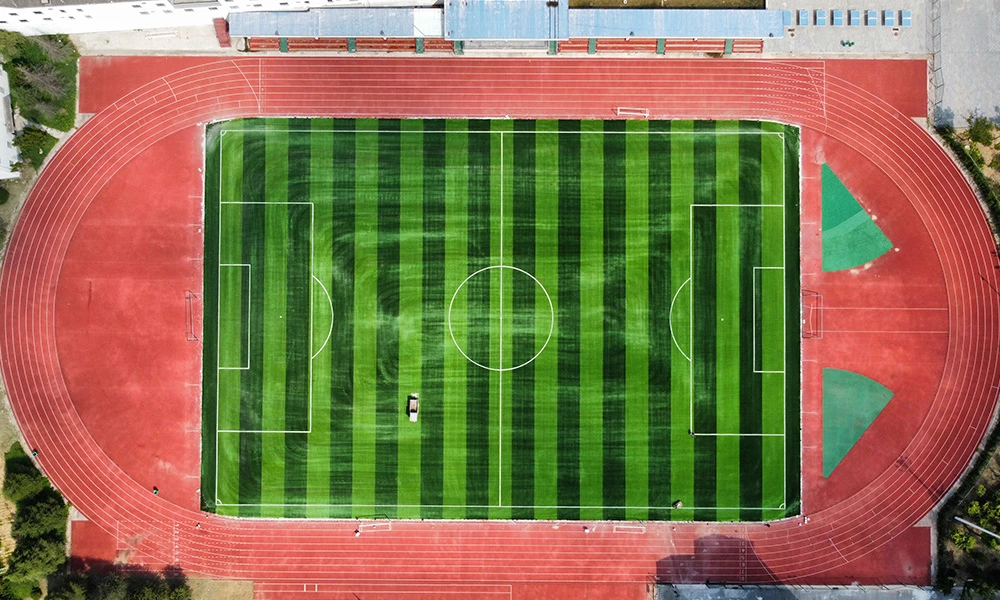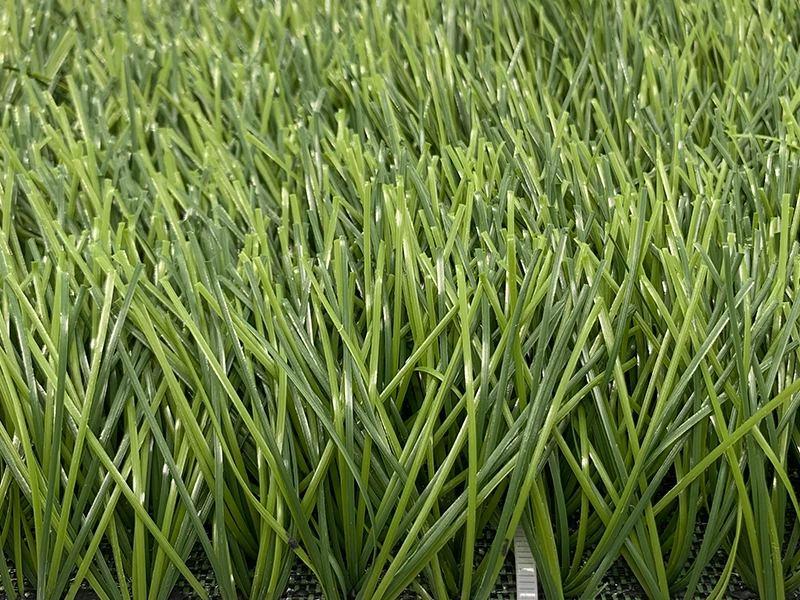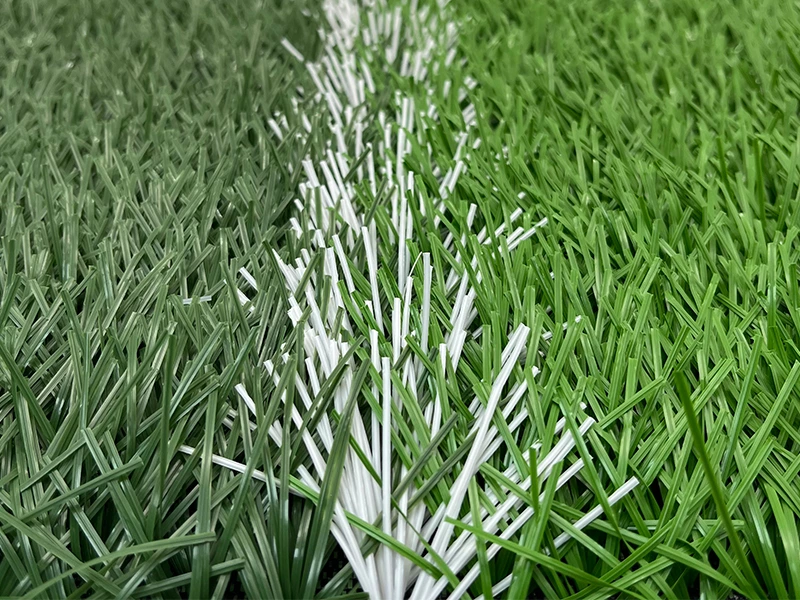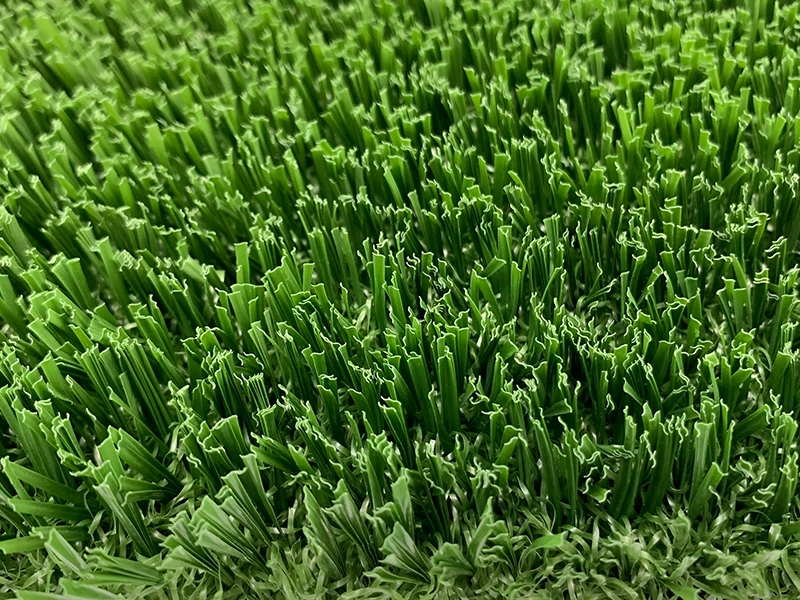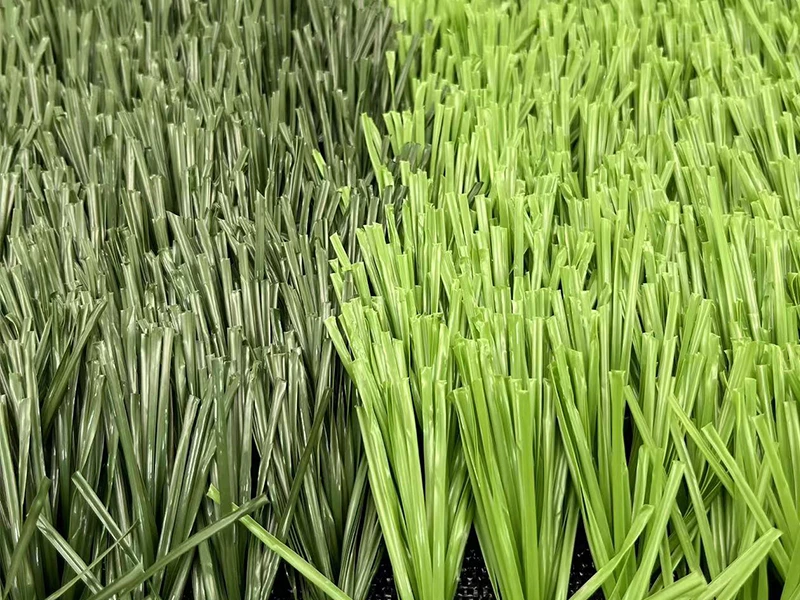Is artificial turf the future?
1. Environmental advantages of artificial turf
Against the background of population growth and accelerated urbanization, water shortage and environmental pollution are becoming increasingly serious. Compared with natural turf, artificial turf has many advantages in environmental protection:
Save water resources: Natural turf needs regular watering, while artificial turf does not need irrigation, which can greatly reduce water consumption and is particularly suitable for arid areas.
Reduce chemical pollution: Traditional lawn maintenance requires the use of fertilizers and pesticides, while artificial turf does not require fertilization or pest control, avoiding the impact of chemical pollution on soil and water sources.
Durable and recyclable: High-quality artificial turf has a service life of up to 10-15 years, and many products are made of recyclable materials, which helps to reduce environmental pollution.
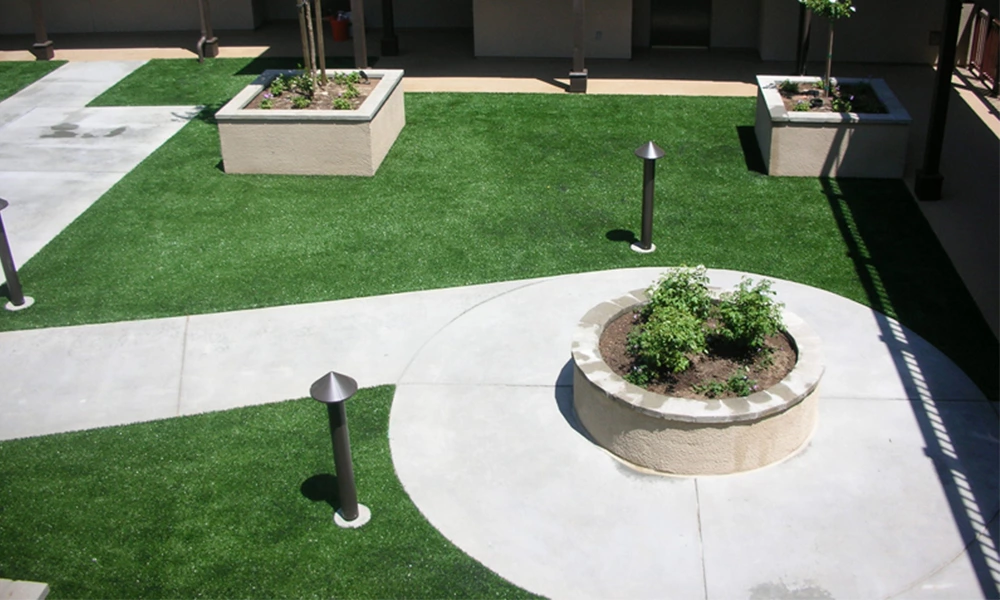
2. The beauty and practicality of artificial turf
Artificial turf is not only environmentally friendly, but also outstanding in beauty and practicality:
Evergreen all year round: Regardless of spring, summer, autumn and winter, artificial turf can maintain a lush appearance, unaffected by climate, and is suitable for parks, courtyards, sports fields and other places.
Low maintenance cost: no need to mow, fertilize or water, saving a lot of manpower and material resources, reducing the long-term use cost.
Wide range of applications: can be used in sports venues (such as football fields, tennis courts, padel courts), kindergartens, commercial plazas, rooftop greening, etc., to meet the needs of different environments.
3. Future development trend of artificial turf
With the advancement of science and technology and the growth of market demand, the artificial turf industry is moving towards higher quality, more environmentally friendly and more intelligent. In the future, artificial turf will show the following trends:
Intelligence and environmental protection in parallel: new artificial turf will use more environmentally friendly materials, such as degradable or recyclable polymers, to improve sustainability, while combining intelligent temperature control technology to reduce the heat island effect.
Closer to the experience of natural turf: Develop softer and more elastic grass silk to improve foot feel and make the sports experience more comfortable, while optimizing the rolling and bouncing characteristics of the ball to make it closer to the performance of natural turf.
Sustainable production and recycling: More and more companies are committed to developing 100% recyclable artificial turf materials and adopting environmentally friendly manufacturing processes to reduce carbon footprint and achieve a circular economy.
Market demand continues to grow: With the expansion of urbanization, people's demand for beautiful, low-maintenance greening solutions has increased, and artificial turf will be more widely used around the world.
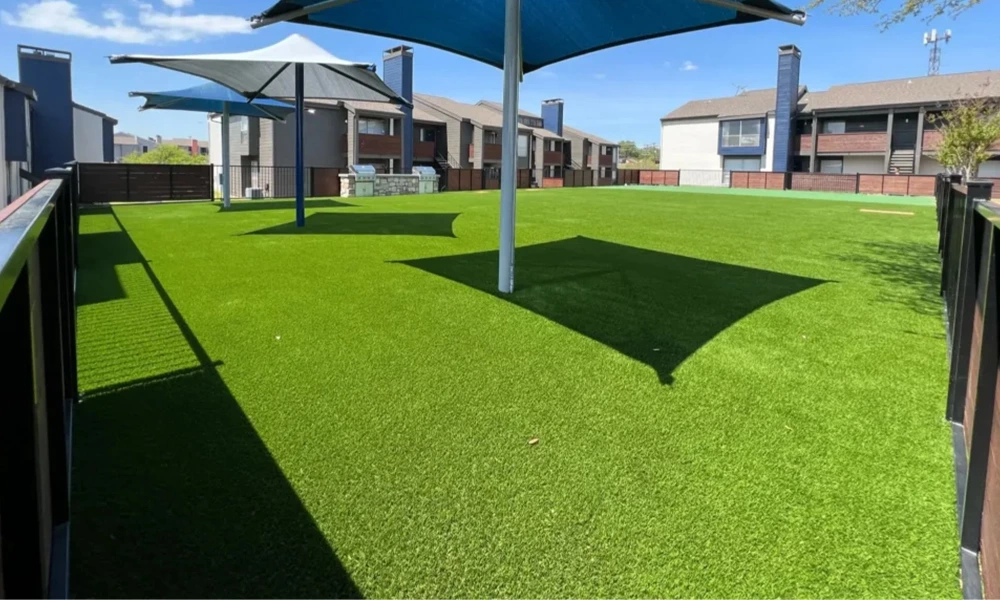
4. Market prospects for artificial turf
According to market forecasts, the global artificial turf industry will continue to grow, especially in sports venues, urban greening and residential areas:
Strong demand in the sports industry: There is an increasing demand for high-quality turf in international events, such as FIFA-certified football fields and padel stadiums. Artificial turf is widely favored for its durability and low maintenance costs.
Expanded urban landscape applications: Governments are paying more and more attention to urban greening and promoting the application of artificial turf in parks, commercial areas and roof gardens.
Rise of residential and commercial markets: More and more families and businesses choose artificial turf for courtyards, balconies, commercial venues, etc. to reduce maintenance costs and improve the beauty of the landscape.
